Speculation on the Gilpin Tramway at the Black Hawk Roundhouse.
Speculation on the Gilpin Tramway at the Black Hawk Roundhouse.
|
For a number of years I have had this suspicion about this mystery Structure visible in one Harry Lake photo of 1899, the neat Hidden Treasure Mill image. Yes, I have interests outside of Idaho Springs.
 Denver Public Library Special Collections L-50 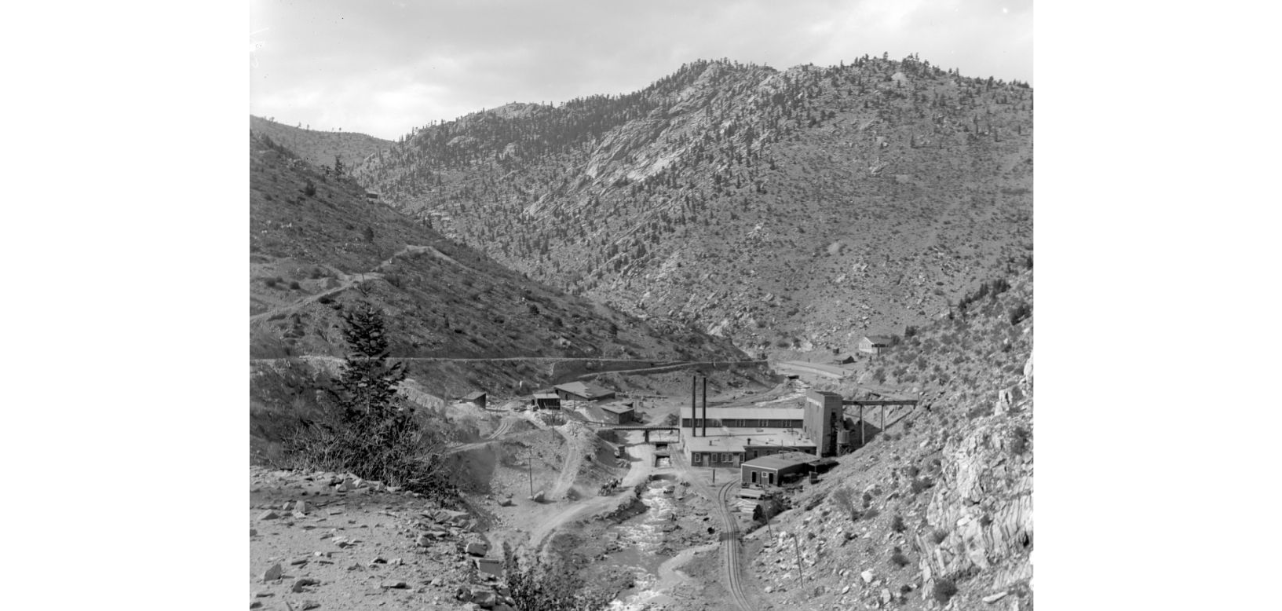 It has been mentioned by many Gilpin Tramway Experts and like-minded followers, in-person discussions on my USA trips that there was a Tank "at", or "inside" the Roundhouse. This has never been confirmed visually to my knowledge. Sanborn Fire Map 1895 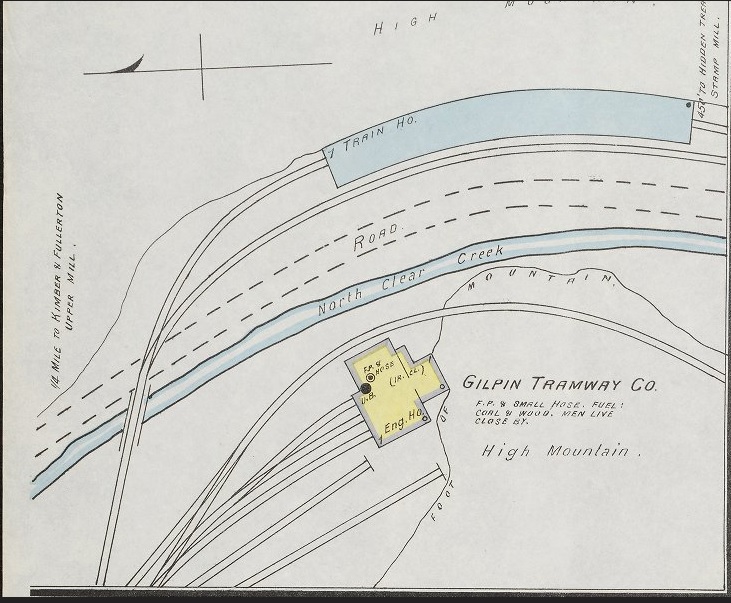 I had always thought it odd, that any of the Shays, engaged in roadwork or switching would have to thread the Roundhouse trackage to refill their small tanks, or proceed downtown to the C&S W.T. Whilst perusing the Lake picture, in digital format I was intrigued that what looked at first glance to be a Mine Orebin, didn't have the elements of such structures. Others had said that there was a Mine "there" and most certainly in later years, an actual Orebin structure. Keith Pashina once showed me his image of that but there were a number of details that didn't match what I'm seeing in the Lake photo, and that was fed by a long ore-slide from above.  Note that the located Adit (>----------) and Ore Vein are at least one Contour level above the Gilpin Trackage. This corresponds with the visible dump in the same general area in the Lake photo. As the New Zealand Railways liked their rectangular Watertanks, and one in particular survived that I ran past regularly, I have that shape etched into my mind's eye, and that didn't gel. One day an Artist friend showed me a way to dissassemble the items of interest. She called it Structural Element Isolation Analysis Technique. Taking a comparative angled view of an Orebin. Denver Public Library Special Collections L-300  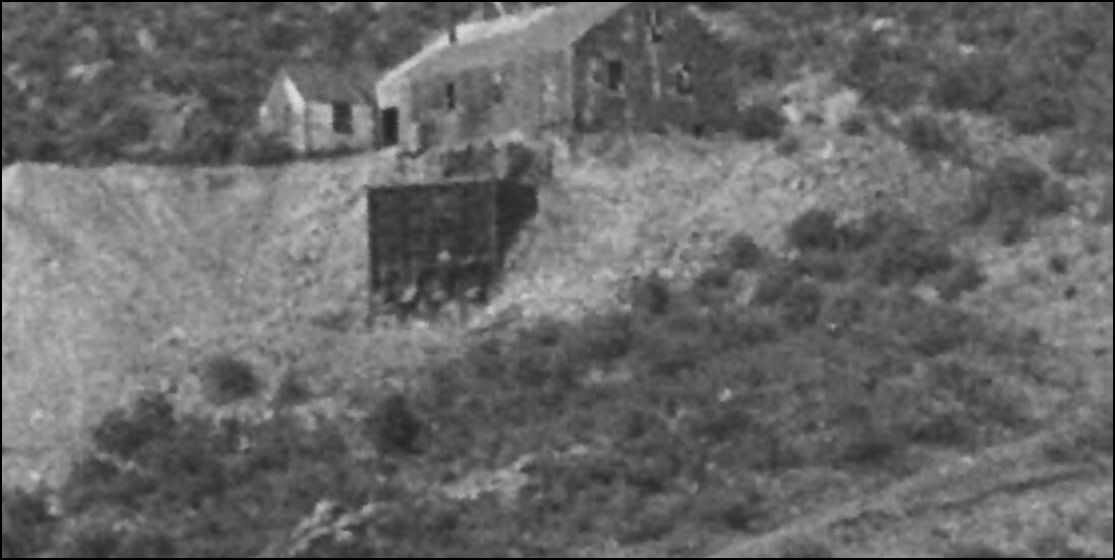 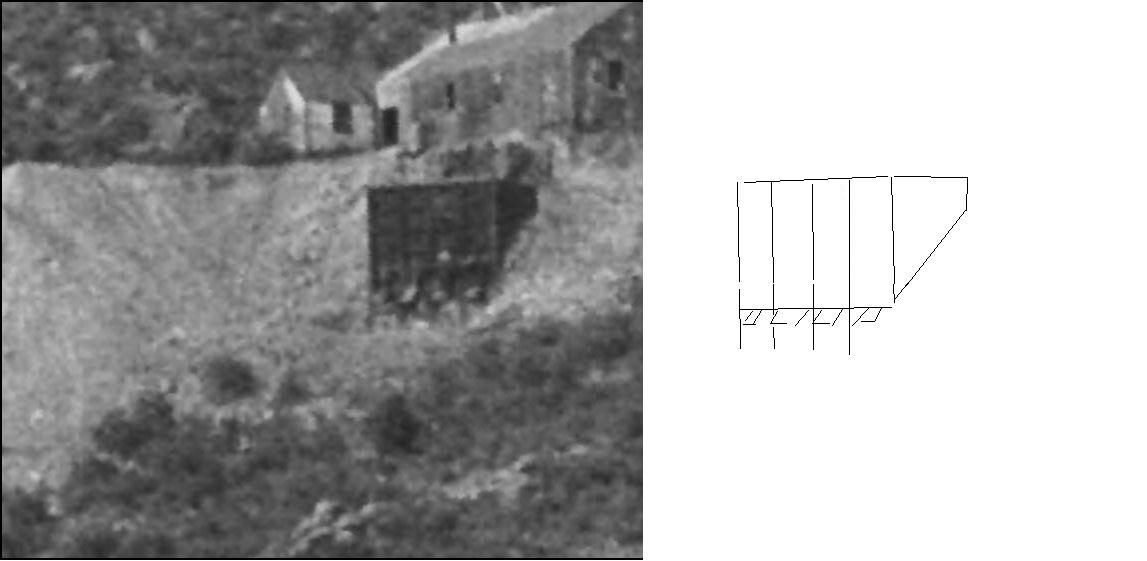 Taking a comparative angled view of a wooden watertank of the retangular( not square) variety for example. Denver Public Library Special Collections MCC-4899 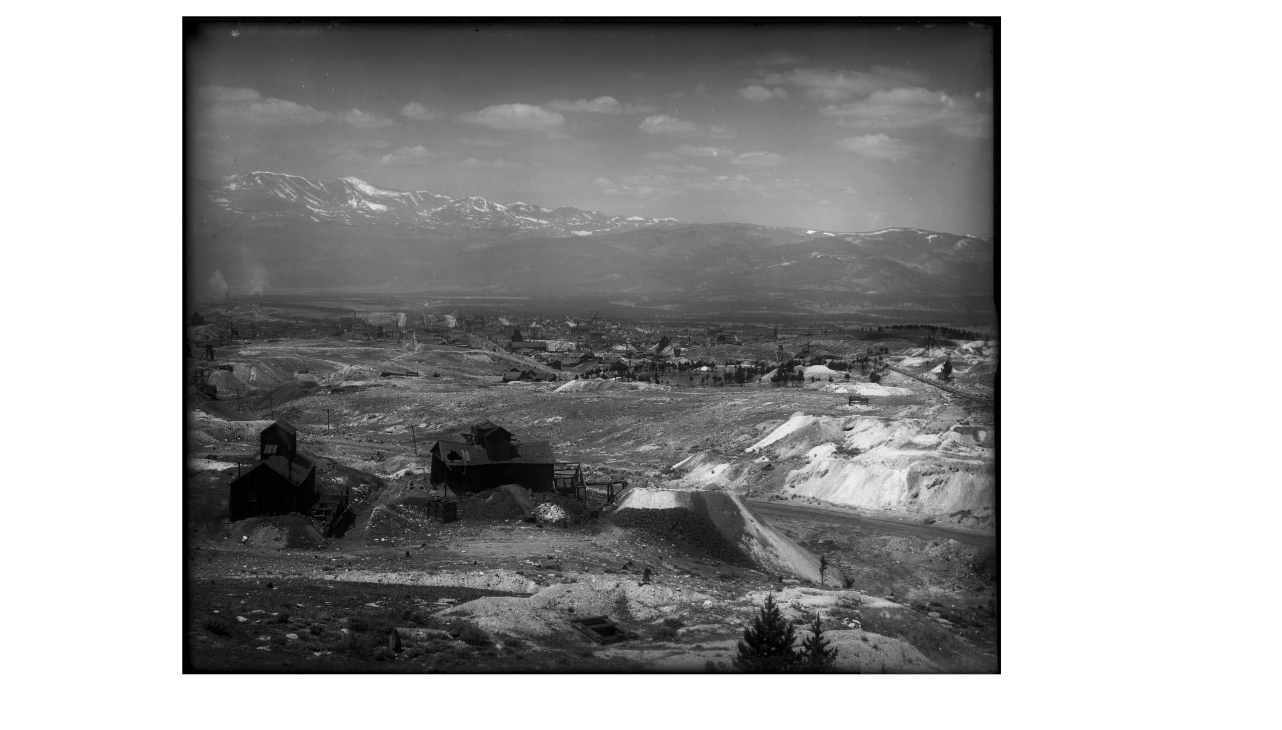 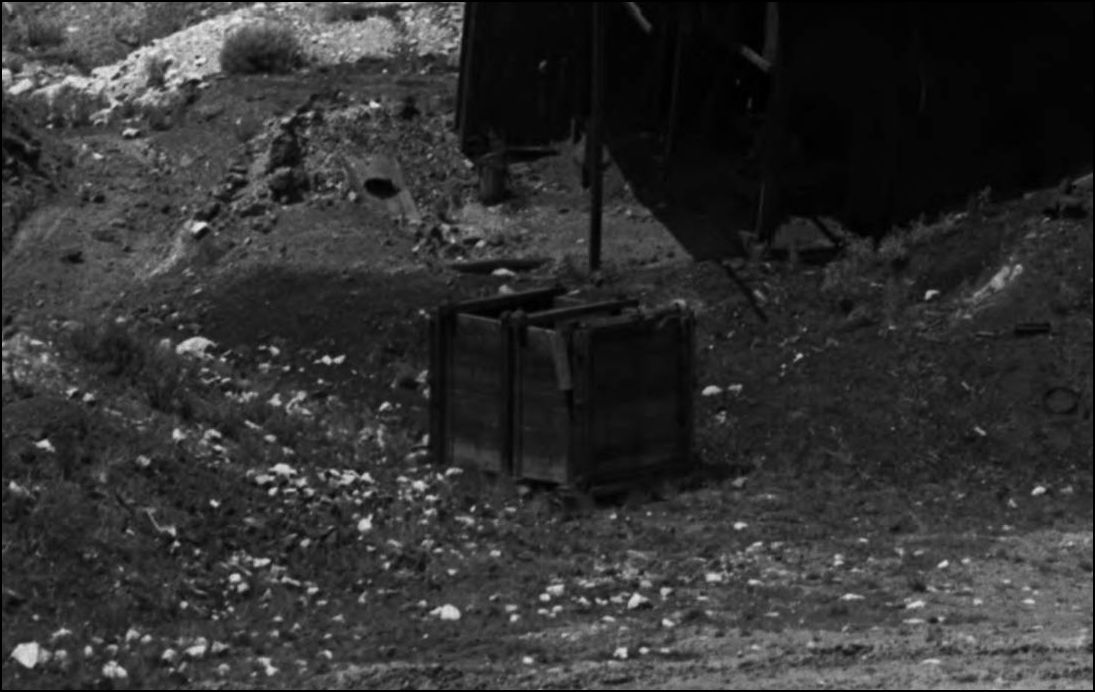  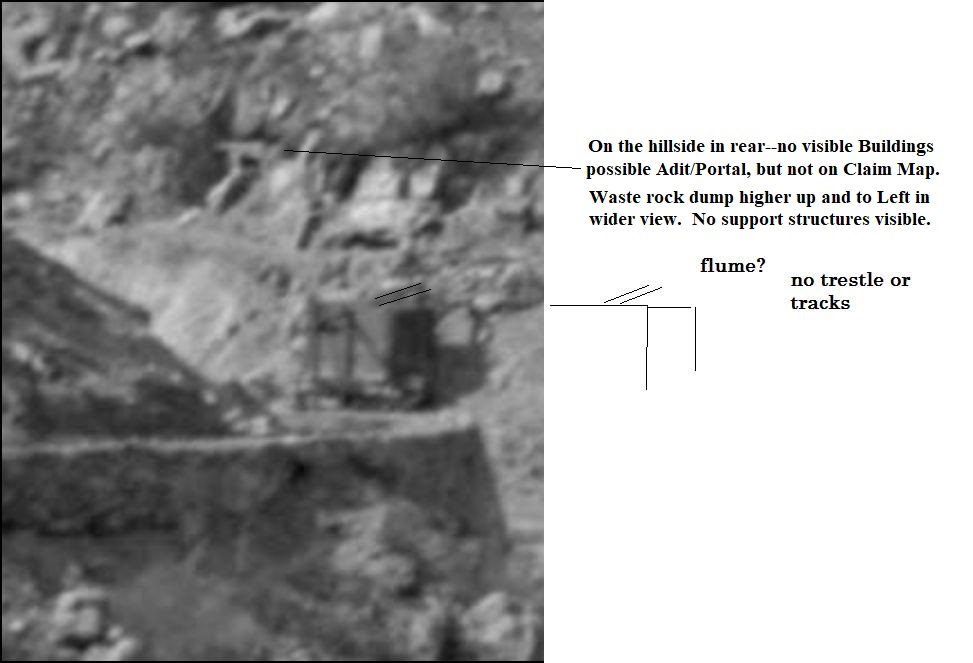 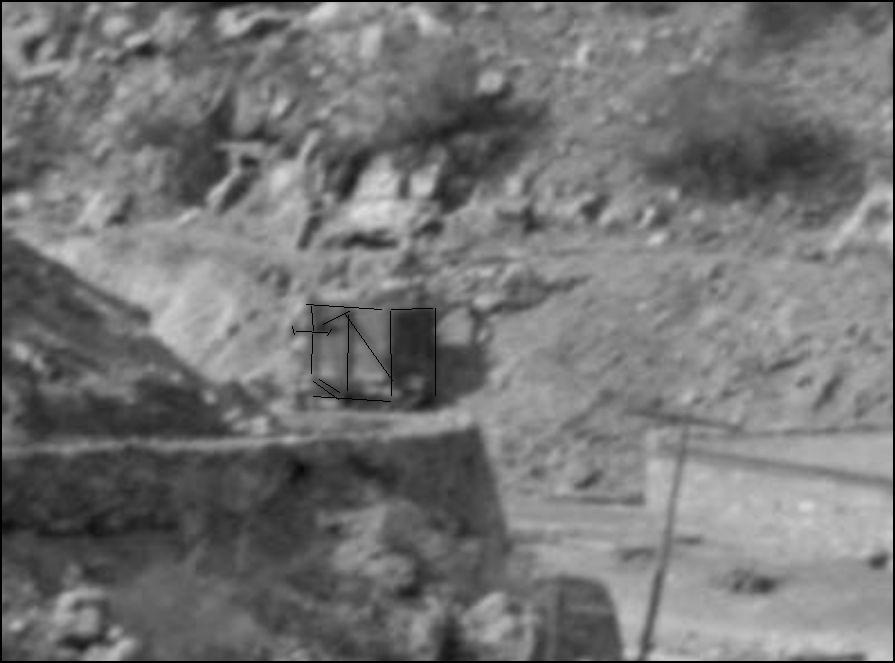 Note: there appears to be a well-defined low angled Spout and Tree, just like one would expect to see, and no resemblance to a Chute-gate sloping outwards. 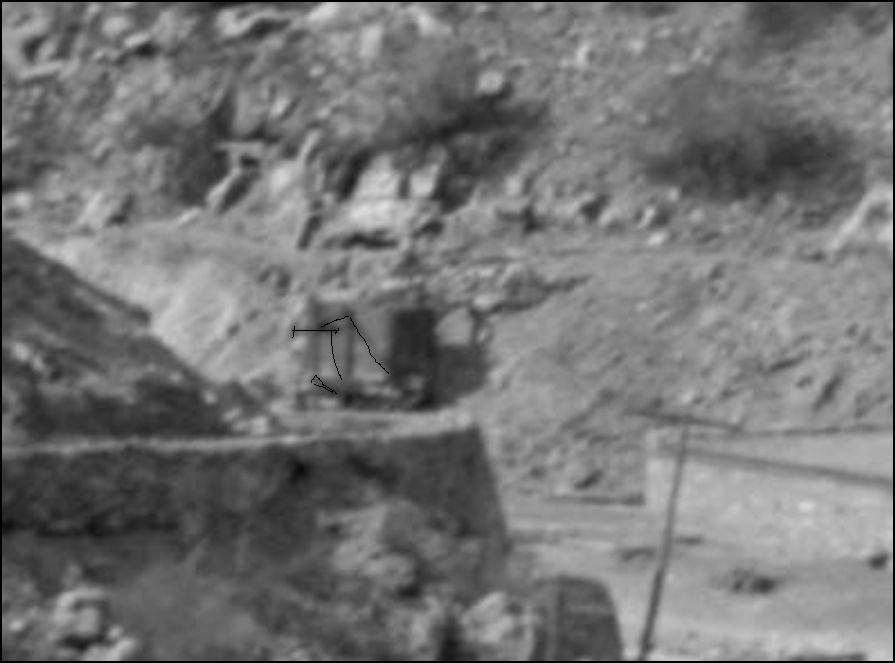 Just another comparative element reinforcement view. 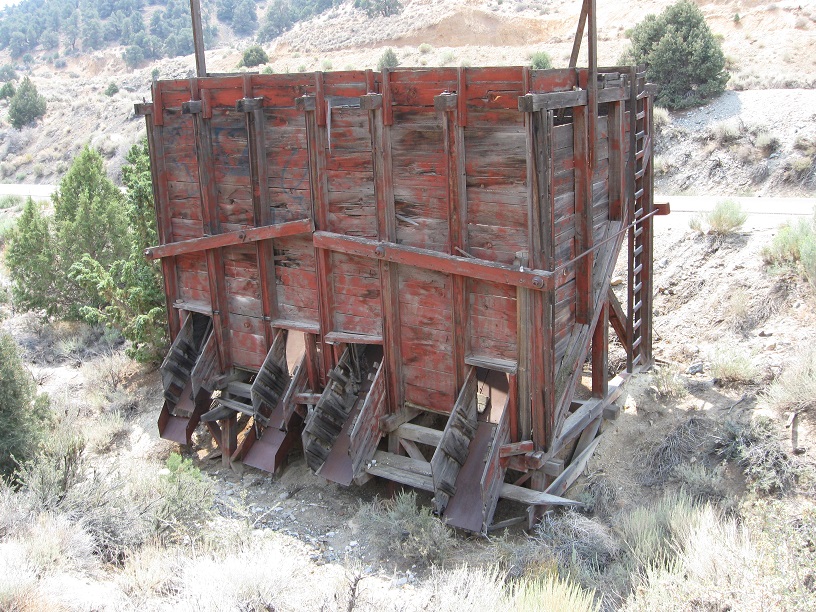 I'm still bothered by this, if I'm off by a mile or right on the nail, the elements just don't match an Orebin. Just what Keith thought about this, I can't remember nor did I have a chance to discuss it with Dan Abbott either. I'm a bit late to the party on this, I'm afraid. 
UpSideDownC
in New Zealand |
Re: Speculation on the Gilpin Tramway at the Black Hawk Roundhouse.
|
Chris, you present a well-laid case for the water tank. As with so many things related to the Gilpin Tram, documentation tends to be sparse, and the water tank at Black Hawk is one of those hard to come by topics. I recall our email debate on this topic a few years ago.
I had originally thought the structure near the warming house had been a mine ore bin. I took a photo of this structure about 20 years ago, and at that time it looked like this: 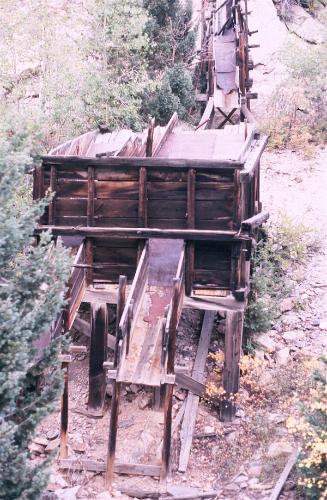 A few years later, the structure succumbed to time and weather, and was in poor shape. I thought the sheet-metal lined slide down the hill from the adit to the bin was pretty interesting. By the way, that's Joe Crea checking out the mine remains. 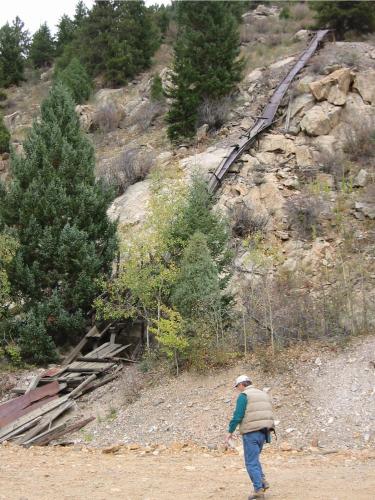 Now, I don't know when this ore bin structure was built - the photos you posted of the area I think were tank in the early 1900s - a lot of changes could have been made in the following years, including removing the water tank after abandonment and a mine operation emerging sometime after that. Some railroads had cisterns up in the rafters of the engine house - Dan Abbott had told me he had read this tidbit when he was researching for his Gilpin Railroad Era book. He had extensively researched much of the local newspapers from the era. I know some other narrow gauge railroads, such as the 2' gauge Bridgton and Saco River in Maine, also were reported to have done this. So, I had thought a cistern in the Gilpin Tram enginehouse seemed very likely. However, your research is very convincing and well presented. If the Gilpin Tram had originally built a cistern in the enginehouse, they could have also expanded the water supply with a larger tank, and as you noted, put the tank out on the mainline on the route to the Black Hawk lower mills. Also, the engine house was expanded in phases from the original single stall to two, then three stalls. A larger tank could have been added in later years, and not been documented in any of the surviving documents. The Gilpin Tram did change their water tanks over the years - the original Eureka Street tank was replaced with a larger structure, and Dan Abbott's research also found a report that another water tank had been added in Russell Gulch (which I have never been able to find a photo of). So, as you and I emailed to each other, I think your premise that this structure was a railroad water tank seems very plausible!
Keith Pashina
Narrow-minded in Arizona |
Re: Speculation on the Gilpin Tramway at the Black Hawk Roundhouse.
|
This is fascinating.
I have one concern that freezing weather would've played havoc on this if it was the engine water supply. I can't tell if there is any evidence of a heater set-up under the tank. The other thought is that maybe this was a water tank for supplying the water tank car which hauled this commodity to the mines. In that case perhaps it wasn't for the engines.
Dave Eggleston
Seattle, WA |
Re: Speculation on the Gilpin Tramway at the Black Hawk Roundhouse.
|
In reply to this post by Keith Pashina
Thanks for popping in, adding your thoughts, and the orebin photo, Keith.
  I knew I'd forget to elaborate my position when getting around to posting this, would you believe I've been mulling this over since isolating the structural componants in 2016. I should have said additional Watertank location; there'd be no reason to replace the existing cistern at/in the Enginehouse, boiler wash and prep. duties would require it. The Sanborn Fire map notation F.P + hose; I presume firepump run off the vertical boiler mentioned. What I was trying to convey was the operational difficulties of relying on the enginehouse location would lead to finding a solution. This thought was after discussion of the location scenario with 3 old steam Enginedrivers I once worked with. (on Diesels, eh!  ) )
While their respective experiences were here with a Government railway(one had been the Relief Fireman for the whole lower South Is. in the 1960's), they did stress that the Gilpin arrangement would have been extremely frustrating to work, at the very least. And I would have to say it may very well depended on just how the Shays were customarily stabled: we did at my first Loco Depot with the locos used daily there, the Shunter and road units usually occupied the very same spots week in, week out; we only had 3 tracks too. The Lake L-50 Hidden Treasure Mill photograph is supposed to be 1899; the only other Warminghouse image is the Shay #3-#1-#2 portrait, (Gilpin Gold Tram dates it 1890: DPL Z-187 says 1900-1901: Gilpin RR Era says 1900). I'm leaning to Mal's date being more accurate. FWIW, the often printed accompanying photo of #1-#2-#3 outside the Enginehouse(DPL Z-3476 dates 1890-1900, appears not to have been taken on the same day. 3 offending trip hazards were not present in that photo.  Keith's slide-fed Orebin analysis.  Location attempt(by rock placement) added to DPL's Lake photo L-50.  Did Joe Crea wear that combination of clothing on Gilpin Tram explorations with you, or was it maybe taken on our 2001 Chase Gulch sortie? 
Gilpin Tramway authorities Dan Abbott, Keith Pashina and Joe Crea: Smith Hill wagon road crossing location, 6th Oct-2001. 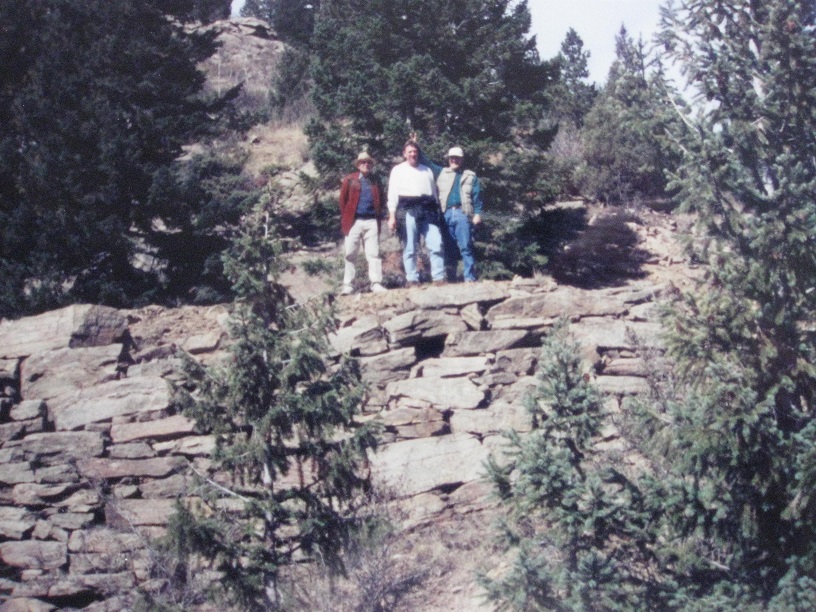 p.s. Dave, great point raising the Watercar fill. While I doubt the Mystery structure would have solely built for that purpose alone, filling the #300 would at 2200 gals, depleted any cistern sited in the roofspace(I would be thinking), taking water at a proper lineside W.T. would be most time efficient as opposed to a(maybe) hose. As for the tank freezing concern: beyond my life experiences. 
UpSideDownC
in New Zealand |
Re: Speculation on the Gilpin Tramway at the Black Hawk Roundhouse.
|
I knew I'd forget dept. I just came across some of my original notes on this"speculation".
Note that the presumed Watertank structure is also located on the line of the buried Flume to the Hidden Treasure Mill.  Note alongside the hillside on the right hidden almost from view is a Smokestack from what I presume to be a Compressor or Shafthouse for a Mine. There appears to be a portal of a Mine Adit directly above the timber boards on Gilpin Orecars setout on the ramp Trestle picture of Shays #1-#2-#3 outside the Enginehouse(DPL Z-3476).
UpSideDownC
in New Zealand |
Re: Speculation on the Gilpin Tramway at the Black Hawk Roundhouse.
|
Chris, I'm glad you found your notes - I'd forgotten all about the buried water flume that fed the Hidden Treasure Mill.
I think the stack you referred to did come from a mine. The photo below was taken in 1991, and I believe this is from about the same location as where the stack is that you pointed out. This is looking generally north, looking over the former Gilpin Tram warming house site. 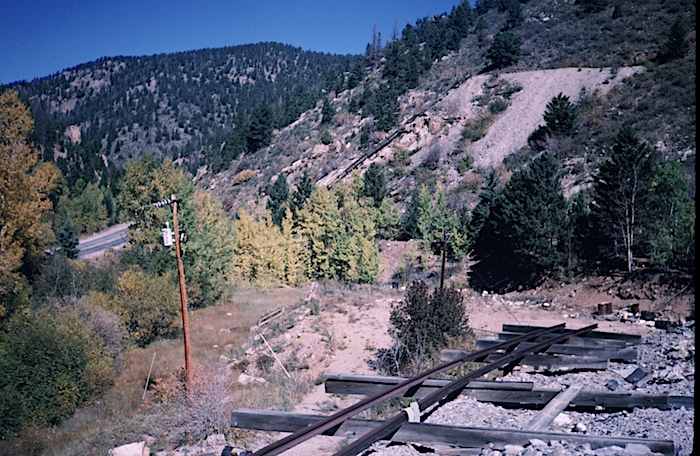
Keith Pashina
Narrow-minded in Arizona |
Re: Speculation on the Gilpin Tramway at the Black Hawk Roundhouse.
|
This post was updated on .
In reply to this post by Chris Walker
The freezing issues related to an ore-bin-style structure of that size still nags me. Begs the out-on-a-limb thought of running a steam line from the warming house up to the tank for defrosting. Using steam off the tiny Shays to defrost might've been slower or not up to the task. And why build a formal cylindrical water tank in Central City but not by the enginehouse? Lots of reasons maybe: timing, who built it, use. I have no idea how quickly a tiny 2-truck Shay depleted its tank running from the engine house to lower Blackhawk and back, switching that distance. That is also a consideration I can't answer. The fire pump and hose are very valid sources for engine water. The CCRR and later 3' gauge lines used city water supplies in Central City and also at Blackhawk at different times. At one period the 3' took water at the Polar Star. There was a water supply to the GT warming house boiler that was just a few hundred feet away. I'm also going to toss out the not impossible idea that the hose was fed out the GT enginehouse side barn door to an engine on the trestle--at least in the early years. I have seen other non-logical (to us) but economical (to them) solutions to problems on 19th century railroads.
Dave Eggleston
Seattle, WA |
Re: Speculation on the Gilpin Tramway at the Black Hawk Roundhouse.
|
This thread has speculated on where the Gilpin Tram watered its locomotives near the enginehouse and Black Hawk yards area. Here is some more speculation about that.
What if there was a water tank located next to the enginehouse (not inside it)? I am looking at this photo from the Denver Public Library, Western History Collection (call number Z-3481): 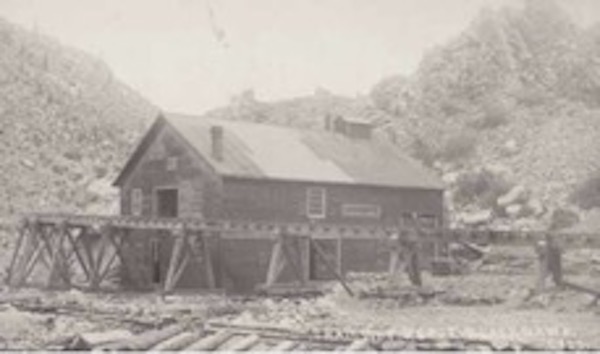 Now, looking at the far right edge, there is a wooden structure partially visible, supported by wood posts. What is it - could be a water tank? I do not know for certain - this is only speculation, but yet another possible answer to how the shays got their water. The enginehouse had a steam boiler for shop machinery, so there would have been some sort of water storage. 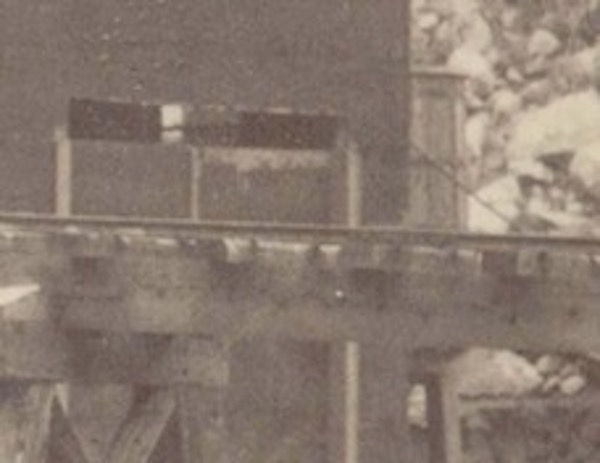
Keith Pashina
Narrow-minded in Arizona |
Re: Speculation on the Gilpin Tramway at the Black Hawk Roundhouse.
|
Keith, interesting thought and good catch on that structure. The Sanborns don't show an addition on that end of the building--but Sanborns have their faults and limits. To my eye the structure doesn't appear to be elevated.
A water supply near the engine house is logical. This discussion of what and where it was keeps pushing me back to the thought: Are we looking for something we normally expect--a tank--that may not have been there? Could the engines have been watered from a stand-pipe with hose somewhere outside the engine house? We know water was piped up to that point, and a tank, while convenient, is not mandatory. Thinking of places like Central City, Blackhawk at times, Fisher. Out on a limb again: What if that structure held a standpipe and hose?
Dave Eggleston
Seattle, WA |
«
Return to C&Sng Discussion Forum
|
1 view|%1 views
| Free forum by Nabble | Edit this page |

